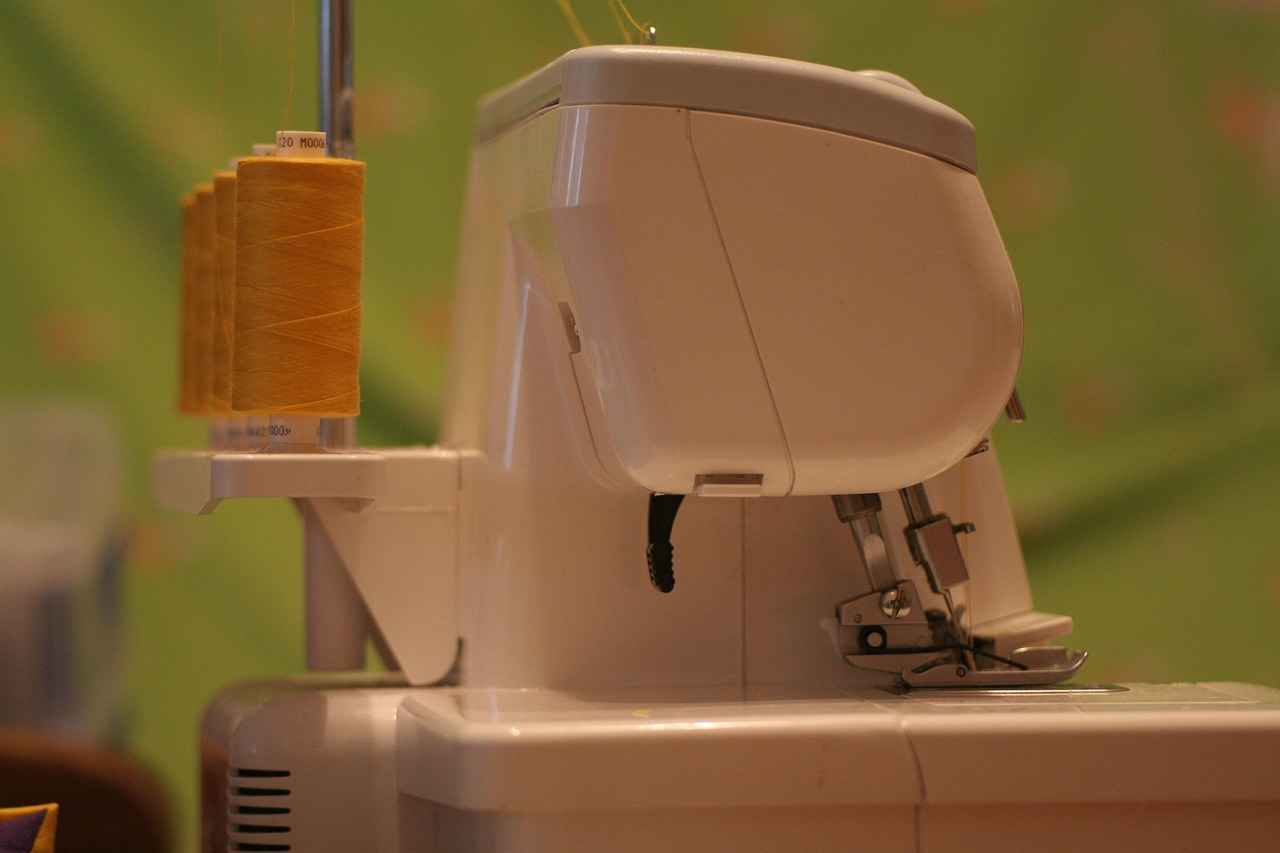When it comes to minor injuries, understanding the cost of getting stitches is crucial for patients. This article delves into the various expenses associated with receiving stitches, highlighting the factors that influence pricing and what individuals can anticipate regarding their healthcare costs.
Several elements contribute to the overall cost of stitches. Being aware of these factors can help patients prepare financially:
- Location: The geographical area where the treatment is provided can significantly affect costs.
- Type of Facility: Costs may vary depending on whether you visit an urgent care center, an emergency room, or an outpatient clinic.
- Complexity of the Injury: More complicated injuries may require additional resources and time, leading to higher costs.
The cost of stitches can vary widely based on the facility:
Typically, urgent care centers offer more affordable rates for stitches compared to emergency rooms. On average, patients can expect to pay between $100 and $300 for stitches at these facilities, which often include basic evaluation and treatment.
Emergency rooms generally charge higher fees, often ranging from $300 to $1,000 or more, due to the comprehensive services they provide. This includes diagnostic tests and a broader range of medical professionals available on-site.
Beyond the direct cost of stitches, patients should be aware of potential additional expenses:
Many facilities impose a consultation fee, which can vary significantly. This fee often covers the initial assessment before treatment is administered.
After receiving stitches, follow-up care is crucial for proper healing. Patients may incur costs for follow-up visits, which can range from $50 to $150 depending on the facility and the complexity of the case.
Understanding how health insurance applies to stitches is essential:
Choosing between in-network and out-of-network providers can greatly impact costs. In-network providers typically offer lower out-of-pocket expenses, while out-of-network services may lead to higher bills.
Patients should familiarize themselves with their insurance deductibles and copayments. These factors can significantly influence the final amount billed after receiving stitches.
There are several strategies patients can employ to reduce the overall cost of stitches:
Opting for an urgent care center instead of an emergency room can lead to considerable savings. Assess the severity of the injury to determine the most appropriate facility.
Being well-informed about your insurance coverage can help navigate costs more effectively. Take the time to review your benefits and understand how to utilize them to minimize out-of-pocket expenses.
While stitches are a common procedure, there are risks involved:
Improper care of stitches can lead to infections. Patients should be aware of the signs of infection, such as increased redness, swelling, or discharge, and seek medical attention if these occur.
Some individuals may experience allergic reactions to the materials used in stitches. It is important to communicate any known allergies to healthcare providers before treatment.

What Factors Influence the Cost of Stitches?
When it comes to receiving stitches for minor injuries, understanding the various factors that contribute to the overall cost can significantly aid patients in preparing for their financial responsibilities. The cost of stitches is not a one-size-fits-all figure; instead, it is influenced by several key elements that can vary widely based on individual circumstances. Here, we delve into the primary factors that affect the pricing of stitches, ensuring that patients have a comprehensive understanding of what to expect.
- Location of Treatment: The geographical location where treatment is sought plays a crucial role in determining costs. Urban areas typically have higher healthcare prices compared to rural settings. This disparity is often due to the higher cost of living and operational expenses for healthcare facilities in cities.
- Type of Facility: The facility chosen for treatment can greatly impact the cost of stitches. For instance, emergency rooms generally charge more than urgent care centers or outpatient clinics. This is attributed to the comprehensive services offered in emergency settings, which include advanced medical equipment and specialized staff.
- Complexity of the Injury: The nature and severity of the injury also influence the cost. Simple lacerations may require fewer resources and time, leading to lower costs. Conversely, complex injuries that necessitate more extensive stitching or additional procedures will likely incur higher expenses.
Additionally, the time of day and the urgency of the situation can also affect pricing. For example, seeking treatment during off-hours or on weekends may result in higher fees, particularly at emergency rooms.
Another important aspect to consider is the insurance coverage. Patients should check with their insurance provider to understand what portion of the cost will be covered and what out-of-pocket expenses they may incur. In-network providers often offer more favorable rates, so knowing your plan details can lead to significant savings.
Furthermore, it is essential to be aware of potential additional costs associated with receiving stitches. These can include:
- Consultation Fees: Many facilities charge a fee for the initial consultation prior to treatment. This fee can vary widely depending on the provider and should be factored into the overall cost.
- Follow-Up Visits: After receiving stitches, patients may need follow-up appointments to ensure proper healing. These visits can add to the overall expense, especially if additional treatments are required.
In conclusion, understanding these various factors can empower patients to make informed decisions regarding their treatment options. By being aware of the costs associated with stitches and the elements that influence these prices, patients can better prepare themselves financially and choose the most suitable healthcare facility for their needs.

How Much Do Stitches Cost at Different Facilities?
The cost of stitches can vary significantly based on the type of facility you choose for treatment. Understanding these differences is crucial for managing your healthcare expenses effectively. In this section, we will explore the price ranges associated with three primary types of healthcare facilities: urgent care centers, emergency rooms, and outpatient clinics.
Urgent care centers are often the most cost-effective option for receiving stitches. On average, patients can expect to pay between $100 and $300 for stitch-related services. This price typically includes the initial consultation, the procedure itself, and basic follow-up care. Urgent care facilities are designed to handle minor injuries and can provide care without the long wait times associated with emergency rooms.
- Average Cost: $100 – $300
- Services Included: Consultation, stitching, and basic follow-up
- Wait Times: Generally shorter than emergency rooms
Emergency rooms (ERs) tend to have higher costs due to their comprehensive services and the nature of their operations. The average cost for stitches in an ER can range from $500 to $3,000, depending on the severity of the injury and additional services provided. Emergency rooms are equipped to handle complex cases, which can lead to inflated prices for even minor procedures.
- Average Cost: $500 – $3,000
- Additional Services: Imaging, specialist consultations, and extensive follow-up
- Wait Times: Longer, as ERs prioritize life-threatening cases
Outpatient clinics can also provide stitching services, often at a cost comparable to urgent care centers. Prices typically range from $150 to $400. These clinics offer a balance between affordability and quality care, making them a viable option for minor injuries.
- Average Cost: $150 – $400
- Services Included: Consultation and stitching
- Accessibility: Generally easier to schedule appointments
Several factors can influence the cost of stitches across these facilities. These include:
- Location: Urban centers may have higher costs compared to rural areas.
- Insurance Coverage: Patients with insurance may face different out-of-pocket expenses depending on their plan.
- Complexity of the Injury: More complex injuries requiring additional treatment will increase costs.
In conclusion, understanding the cost differences between urgent care centers, emergency rooms, and outpatient clinics can help patients make informed decisions about where to seek treatment for minor injuries. By considering factors such as location and insurance coverage, individuals can better prepare for the potential costs associated with receiving stitches.
Urgent Care Centers
are becoming increasingly popular for treating minor injuries, including the need for stitches. One of the primary advantages of these facilities is their affordability compared to traditional emergency rooms. In this section, we will delve into the average costs associated with getting stitches at urgent care centers and the services typically included in these prices.
The average cost for stitches at an urgent care center can range from $100 to $300, depending on various factors. This price is significantly lower than what you might expect to pay at an emergency room, where costs can soar to $1,000 or more. The lower prices at urgent care centers stem from their streamlined services and less complex infrastructure.
When you visit an urgent care center for stitches, the quoted price usually encompasses several essential services:
- Initial Consultation: A healthcare provider will assess the injury and determine the need for stitches.
- Stitching Procedure: This includes the application of local anesthesia and the actual stitching of the wound.
- Follow-Up Instructions: Patients are typically provided with care instructions for the stitches to ensure proper healing.
- Basic Supplies: The cost usually covers materials such as sutures, antiseptics, and bandages.
There are several compelling reasons to opt for urgent care centers over emergency rooms for minor injuries:
- Cost-Effectiveness: As mentioned earlier, the cost savings can be substantial.
- Convenience: Urgent care centers often have extended hours and do not require appointments, making them accessible for immediate care.
- Shorter Wait Times: Patients typically experience shorter wait times compared to emergency rooms, where patients with more severe conditions take priority.
While urgent care centers offer lower prices for stitches, patients should be aware of potential additional costs:
- Consultation Fees: Some facilities may charge a separate consultation fee.
- Medication Costs: If prescribed antibiotics or pain relief, these will incur extra charges.
- Follow-Up Visits: If complications arise or if follow-up care is necessary, these visits may also add to the overall cost.
Insurance coverage can significantly affect the out-of-pocket expenses for stitches. Many insurance plans cover urgent care visits, but it’s important to check:
- In-Network vs. Out-of-Network: Ensure the urgent care center is in-network to minimize costs.
- Deductibles and Copayments: Be aware of your plan’s deductible and copayment requirements for urgent care visits.
In summary, urgent care centers provide a cost-effective and efficient alternative for receiving stitches for minor injuries. With a clear understanding of the average costs, included services, and potential additional expenses, patients can make informed decisions about their healthcare. Always check with your insurance provider to understand coverage specifics and ensure you are making the best choice for your situation.
Emergency Rooms
When you find yourself in need of stitches, particularly for minor injuries, it’s crucial to understand the financial implications of seeking care at an emergency room (ER). Emergency rooms, while equipped to handle severe cases, often charge higher fees for procedures like stitching wounds. This article delves into the reasons behind these costs and what patients can anticipate during their visit.
Emergency rooms typically charge higher fees for stitches due to several factors:
- Comprehensive Services: ERs provide a wide range of services, including diagnostic tests, imaging, and specialized care, which can drive up costs.
- Staffing and Equipment: The presence of trained medical professionals and advanced equipment contributes to the higher operational costs of an ER.
- 24/7 Availability: Emergency rooms are open around the clock, ensuring immediate care for urgent situations, which adds to the overall expense.
Patients should be prepared for various aspects of their visit to an emergency room:
- Initial Assessment: Upon arrival, patients undergo an initial assessment to determine the severity of their injury, which may include a wait time depending on the ER’s current caseload.
- Treatment Costs: The actual cost of stitches can vary significantly. Patients might pay anywhere from $100 to $500 or more, depending on the complexity of the injury and the facility.
- Additional Services: Patients may also incur charges for medications, anesthesia, or follow-up care, further increasing the total bill.
After receiving treatment, patients will receive a bill detailing the services rendered. Here are some key components to understand:
- Itemized Charges: Look for an itemized list of services, including consultation fees, materials used for stitching, and any additional tests performed.
- Insurance Coverage: Verify what your insurance covers and what portion you are responsible for, as this can significantly affect your out-of-pocket expenses.
To minimize the financial impact of an emergency room visit, consider the following strategies:
- Know Your Insurance: Familiarize yourself with your health insurance policy, including deductibles and co-pays related to emergency services.
- Inquire About Costs: Don’t hesitate to ask about the expected costs before receiving treatment. Many ERs can provide estimates based on your condition.
- Explore Alternatives: For non-life-threatening injuries, consider visiting an urgent care center, which typically offers lower rates for similar services.
Understanding the costs associated with receiving stitches in an emergency room can help patients make informed decisions about their healthcare. While ERs are essential for urgent and severe injuries, being aware of the financial implications can empower patients to seek the most appropriate care while minimizing expenses. Always consider your options and stay informed about your insurance coverage to navigate these situations effectively.

Are There Additional Costs to Consider?
When it comes to healthcare expenses, understanding the full scope of costs associated with getting stitches is essential. While many people focus solely on the direct costs of the procedure, it is equally important to consider additional expenses that can arise during the treatment process. This section delves into various potential costs, including consultations, medications, and follow-up visits, to provide a comprehensive overview for patients.
Many patients are surprised to find that the cost of stitches extends beyond the initial procedure. Here are some key areas where additional costs may arise:
- Consultation Fees: Before receiving stitches, patients often need to undergo a consultation with a healthcare provider. This fee can vary significantly by facility and location, ranging from $50 to $200. Understanding this upfront cost is crucial for budgeting.
- Medications: After getting stitches, patients may require medications such as pain relievers or antibiotics to prevent infection. These medications can add another $20 to $100 to the overall expense, depending on the prescription.
- Follow-Up Visits: Proper healing often necessitates follow-up appointments to ensure the stitches are healing correctly. Each visit can incur additional costs, typically ranging from $30 to $150, depending on the facility and the nature of the follow-up care.
The type of healthcare facility where treatment is received can significantly influence the additional costs associated with stitches. For example:
- Urgent Care Centers: These facilities often have lower consultation fees and may offer bundled pricing for stitches and follow-up care, making them a cost-effective option.
- Emergency Rooms: While ERs provide comprehensive care, they typically charge higher fees for consultations and follow-ups, which can lead to increased overall costs.
Insurance coverage plays a vital role in determining how much patients will ultimately pay for stitches and related expenses. It is important to understand:
- Coverage for Consultations: Some insurance plans may cover consultation fees, while others may not. Patients should verify their coverage before seeking treatment.
- Prescription Coverage: Not all insurance plans cover medications prescribed after receiving stitches. Patients should check their formulary to understand their out-of-pocket costs.
- Follow-Up Care: Insurance coverage for follow-up visits can vary. Patients should confirm whether their plan covers these visits to avoid unexpected expenses.
To minimize financial surprises, patients can take several proactive steps:
- Inquire About Costs Upfront: Before treatment, patients should ask about all potential costs, including consultation fees and follow-up care.
- Review Insurance Policies: Familiarizing oneself with the details of their insurance plan can help patients understand what will be covered and what will not.
- Consider Payment Plans: Some facilities may offer payment plans or financial assistance for those facing high out-of-pocket costs.
In summary, while the direct cost of stitches is a primary concern, patients must also consider the additional expenses that can arise during the treatment process. By being informed and prepared, patients can navigate these costs more effectively and ensure they receive the necessary care without unexpected financial burdens.
Consultation Fees
When it comes to receiving treatment for minor injuries, understanding the associated with stitches is crucial for patients. Many healthcare facilities implement these fees to cover the costs of initial assessments, which can vary significantly based on several factors.
Consultation fees are charges that patients incur during their first visit to a healthcare facility. These fees often cover the cost of the healthcare professional’s time to evaluate the injury, discuss treatment options, and make necessary recommendations. It’s important to note that these fees can differ widely depending on the type of facility you choose.
Patients should be aware that consultation fees can vary based on the facility type:
- Urgent Care Centers: Typically, urgent care centers charge lower consultation fees compared to emergency rooms. This makes them an attractive option for minor injuries.
- Emergency Rooms: Emergency rooms often have higher consultation fees due to the comprehensive services they provide, including diagnostic tests and specialized care.
- Outpatient Clinics: Outpatient clinics may have moderate fees, depending on their location and the services offered. It’s advisable to call ahead to inquire about specific charges.
Before visiting a healthcare facility, patients should consider the following:
- Insurance Coverage: Check with your insurance provider to understand what portion of the consultation fee is covered. Some plans may have specific stipulations regarding consultation fees.
- Transparency: Don’t hesitate to ask the facility about their pricing structure. Many places will provide a breakdown of costs, including consultation fees, upfront.
- Payment Options: Inquire about payment plans or financial assistance programs if you’re concerned about the cost. Many facilities are willing to work with patients to ensure they receive necessary care.
Understanding consultation fees is vital for several reasons:
- Financial Preparation: Knowing the potential costs helps patients budget for their healthcare expenses, reducing surprise bills.
- Informed Decisions: By understanding the costs associated with different facilities, patients can make informed decisions about where to seek treatment.
- Quality of Care: Higher fees don’t always equate to better care. Evaluating the facility’s reputation and quality of service is essential.
In conclusion, being aware of consultation fees before seeking treatment for stitches can significantly impact your overall healthcare experience. By understanding how these fees vary by facility and what to expect, patients can make informed decisions that align with their financial situations and healthcare needs. Always remember to ask questions and seek clarity to ensure you receive the best possible care without unexpected costs.
Follow-Up Care
is an essential component of the healing process after receiving stitches. While the initial treatment may be straightforward, the importance of monitoring the wound and ensuring proper recovery cannot be overstated. This section delves into the potential costs associated with follow-up visits and emphasizes their significance for optimal healing.
After getting stitches, proper wound care is crucial to prevent complications such as infections, improper healing, or scarring. Follow-up visits allow healthcare providers to:
- Assess the healing progress of the wound
- Remove stitches if necessary
- Provide additional treatment if complications arise
Without follow-up care, patients face a higher risk of complications that could lead to more extensive treatments and costs down the line.
The costs associated with follow-up care can vary significantly based on several factors:
- Location: Prices can differ between urban and rural areas, as well as between various healthcare facilities.
- Type of Facility: Follow-up care can be conducted at clinics, urgent care centers, or hospitals, each with different pricing structures.
- Insurance Coverage: Patients should check with their insurance providers to understand what follow-up visits are covered and what out-of-pocket expenses they may incur.
On average, follow-up visits can range from $50 to $200 depending on the factors mentioned above. Here’s a breakdown of potential costs:
| Facility Type | Average Cost |
|---|---|
| Urgent Care Center | $50 – $100 |
| Outpatient Clinic | $75 – $150 |
| Emergency Room | $150 – $200 |
These costs can include consultation fees, examination fees, and any necessary follow-up treatments.
During follow-up appointments, healthcare providers will typically:
- Evaluate the wound for signs of infection, such as redness, swelling, or discharge
- Remove stitches if they are no longer needed
- Provide wound care instructions to facilitate healing
Patients should be prepared to discuss any concerns they may have about their recovery and ask questions regarding their care.
To keep follow-up care costs manageable, consider the following strategies:
- Utilize In-Network Providers: If you have health insurance, choosing in-network providers can significantly reduce out-of-pocket expenses.
- Ask About Payment Plans: Some facilities offer payment plans for follow-up care, making it easier to manage costs.
- Be Proactive: Follow the wound care instructions provided by your healthcare provider to avoid complications that could lead to additional visits.
In summary, while follow-up care may involve additional costs, it plays a vital role in ensuring proper healing after getting stitches. By understanding the potential expenses and the importance of these visits, patients can make informed decisions about their healthcare and recovery process.

What Insurance Coverage is Available for Stitches?
When it comes to receiving stitches for minor injuries, understanding insurance coverage is essential for patients. This section delves into what you can expect regarding insurance coverage, out-of-pocket expenses, and how to navigate your options effectively.
Your health insurance plan can significantly influence the cost of getting stitches. Many patients are often unaware of how their specific plan applies to emergency and urgent care services. Typically, insurance will cover a portion of the costs associated with stitches, but the exact amount can vary widely based on several factors.
Choosing between in-network and out-of-network providers can have a major impact on your overall expenses. In-network providers have agreements with your insurance company to provide services at reduced rates. Conversely, out-of-network providers may charge higher fees, leading to higher out-of-pocket costs for patients. Always check your insurance policy to see which facilities are considered in-network.
Before receiving treatment, it’s crucial to understand your deductibles and copayments. A deductible is the amount you must pay out-of-pocket before your insurance begins to cover costs. Once you meet your deductible, you may still need to pay a copayment for each visit. These fees can vary based on your specific plan, so reviewing your policy or contacting your insurance provider can provide clarity.
To get the most out of your insurance coverage for stitches, consider the following tips:
- Verify Coverage: Before seeking treatment, call your insurance provider to confirm what is covered regarding stitches.
- Choose In-Network Facilities: Opt for facilities that are in-network to minimize your costs.
- Keep Records: Maintain all receipts and documentation related to your treatment, as this can help in case of disputes with your insurance.
In addition to the direct costs of stitches, there may be other expenses involved. These can include:
- Consultation Fees: Many facilities charge a fee for the initial consultation, which can add to your overall costs.
- Medications: If you require pain relief or antibiotics after getting stitches, these medications can incur additional costs.
- Follow-Up Visits: Follow-up care is often necessary to ensure proper healing, and these visits may also come with their own fees.
If your insurance plan does not cover the cost of stitches, or if you are facing high out-of-pocket expenses, consider the following options:
- Discuss Payment Plans: Many healthcare providers offer payment plans that can make it easier to manage costs.
- Negotiate Costs: Don’t hesitate to ask the facility if they can reduce the charges or offer a discount for paying upfront.
- Explore Financial Assistance Programs: Some hospitals have programs to assist patients who are uninsured or underinsured.
Understanding how health insurance covers the cost of stitches can help patients prepare for potential expenses. By being informed and proactive, you can navigate your healthcare needs more effectively and minimize unexpected costs.
In-Network vs. Out-of-Network Providers
When it comes to healthcare, making informed decisions about your provider can greatly impact your financial responsibilities. One of the most significant choices you’ll face is whether to seek treatment from in-network or out-of-network providers. This decision can have a profound effect on your out-of-pocket costs, insurance coverage, and overall healthcare experience.
In-network providers are healthcare professionals and facilities that have contracted with your insurance company to provide services at agreed-upon rates. These agreements typically result in lower costs for patients, as insurance companies negotiate discounted fees with in-network providers. When you choose an in-network provider, you can often expect:
- Lower Copayments: Patients usually pay a reduced copayment when visiting an in-network provider.
- Higher Coverage: Insurance plans generally cover a larger percentage of the costs associated with in-network services.
- Streamlined Claims Process: Billing is often handled directly between the provider and the insurance company, reducing the administrative burden on patients.
On the other hand, out-of-network providers do not have a contract with your insurance plan. This means that patients may face significantly higher costs when seeking treatment from these providers. Key considerations include:
- Higher Costs: Patients may be responsible for a larger portion of the bill, including deductibles and copayments.
- Limited Coverage: Insurance plans often cover a smaller percentage of costs for out-of-network services, leading to higher out-of-pocket expenses.
- Complex Billing: Patients may need to submit claims themselves, which can complicate the reimbursement process.
Choosing between in-network and out-of-network providers requires careful consideration. Here are some steps to help you make an informed decision:
- Review Your Insurance Plan: Understanding your coverage details is crucial. Check which providers are in-network and what your plan covers for out-of-network services.
- Assess Your Healthcare Needs: Consider the complexity of your medical needs. If you require specialized care, you may need to seek out-of-network providers.
- Compare Costs: Use cost calculators provided by your insurance company to estimate potential expenses for both in-network and out-of-network providers.
While out-of-network providers might offer specialized services or expertise, there are inherent risks. Patients may face unexpected costs, and the lack of a negotiated rate can lead to significant financial strain. It’s essential to weigh these risks against the benefits of seeing a particular out-of-network provider.
In summary, the choice between in-network and out-of-network providers can significantly impact your healthcare costs. By understanding the differences and considering your specific needs, you can make informed decisions that align with your financial and health goals.
Deductibles and Copayments
When navigating the landscape of healthcare costs, it is essential for patients to understand the nuances of their insurance plans, particularly regarding deductibles and copayments. These financial components can significantly influence the overall expenses incurred when receiving treatment, such as getting stitches for a minor injury.
Deductibles refer to the amount a patient must pay out-of-pocket before their insurance coverage kicks in. For instance, if your deductible is $1,000, you will need to pay that amount for covered services before your insurance starts to cover costs. On the other hand, copayments are fixed fees that patients pay for specific services, such as a doctor’s visit or a prescription medication, regardless of whether the deductible has been met.
Understanding your deductible is crucial when preparing for any medical procedure, including getting stitches. If you have not yet met your deductible, you will be responsible for the entire cost of the stitches until you reach that threshold. This can lead to unexpected expenses, especially in cases where the cost of stitches varies significantly based on the facility and complexity of the injury.
Copayments can also add to the overall cost of receiving stitches. For example, if you visit an urgent care center for treatment, you may be required to pay a copayment at the time of service. This amount can vary based on your specific insurance plan and the type of facility you choose. Understanding your copayment structure can help you prepare for these costs in advance.
- Review Your Insurance Policy: Familiarize yourself with your deductible and copayment amounts before seeking treatment.
- Contact Your Provider: Reach out to your insurance company or healthcare provider to clarify any questions regarding coverage.
- Estimate Costs: Research the average costs of stitches at different facilities to gauge potential expenses.
If you find yourself needing stitches but have not yet met your deductible, it is essential to consider your options. You might want to explore urgent care centers or outpatient clinics, which often provide lower-cost alternatives compared to emergency rooms. This can help mitigate the financial burden while still receiving necessary care.
Insurance plans can vary widely in terms of coverage for stitches. Some plans may cover a portion of the costs after the deductible is met, while others might require higher copayments for specific services. It is vital to understand the specifics of your plan to avoid any surprises when you receive your final bill.
Staying informed about your insurance plan’s deductible and copayment structures can empower you to make better financial decisions regarding your healthcare. By understanding these factors, you can better prepare for the costs associated with receiving stitches or any other medical treatment.

How Can You Minimize the Cost of Stitches?
When facing the need for stitches, many patients find themselves concerned about the overall costs associated with this common procedure. Fortunately, there are several strategies that can help minimize these expenses while ensuring necessary care is received. This section outlines practical tips aimed at reducing the financial burden of getting stitches.
One of the most effective ways to save money on stitches is to carefully select the healthcare facility. Urgent care centers are often a more affordable option than emergency rooms, especially for minor injuries. Patients should research nearby facilities and compare their pricing structures. It’s also wise to check if the facility is in-network with your insurance provider, as this can lead to lower out-of-pocket costs.
Before seeking treatment, it is crucial to have a clear understanding of your health insurance plan. Knowing your deductibles and copayments can significantly impact your overall expenses. Contact your insurance provider to ask about coverage for stitches and any potential out-of-pocket costs. This knowledge will empower you to make informed decisions regarding your care.
In some cases, taking preventive measures can help avoid the need for stitches altogether. For example, wearing protective gear during activities that pose a risk of injury can significantly reduce the likelihood of cuts and abrasions. Additionally, seeking prompt treatment for minor wounds can prevent complications that may require stitches later on.
Patients should not hesitate to discuss costs with healthcare providers. Many facilities are willing to negotiate fees or offer payment plans for those who are uninsured or facing financial difficulties. It’s important to be upfront about your situation; providers often have resources available to assist patients in managing their medical expenses.
Some communities offer resources for low-cost or free medical care. Local health clinics, non-profit organizations, and community health events may provide services at reduced rates. Researching these options can lead to significant savings, especially for those without insurance.
For minor injuries that may not require in-person treatment, telemedicine can be a cost-effective alternative. Many healthcare providers now offer virtual consultations, allowing patients to receive guidance on whether stitches are necessary without the added costs of a physical visit. This can be particularly beneficial for those with limited access to healthcare facilities.
After receiving stitches, follow-up care is often necessary to ensure proper healing. Patients should inquire about the costs of follow-up visits and whether they are covered by their insurance. Understanding these potential expenses upfront can help avoid unexpected bills later on.
Maintaining a record of all medical expenses related to stitches can provide insights into your healthcare spending. This can help in future planning and budgeting for medical needs. Additionally, if you encounter billing errors, having detailed records will assist in resolving any discrepancies.
By implementing these strategies, patients can effectively minimize the costs associated with getting stitches while ensuring they receive the necessary care for their injuries. Understanding the healthcare landscape and being proactive about financial planning are key components to managing medical expenses successfully.
Choosing the Right Facility
When faced with a minor injury that may require stitches, the choice of healthcare facility can have a profound impact on both your health and your wallet. Understanding the differences between urgent care centers and emergency rooms is crucial for making an informed decision. In this section, we will delve into the factors to consider when choosing the right facility, emphasizing the potential for significant savings.
Choosing the appropriate healthcare facility can lead to substantial savings and reduced wait times. The type of facility you select can affect your overall experience, including the quality of care, treatment time, and out-of-pocket expenses. By weighing your options carefully, you can ensure that you receive the necessary treatment without incurring excessive costs.
- Urgent Care Centers: These facilities are designed to handle non-life-threatening conditions. They typically offer lower costs for services like stitches. Most urgent care centers operate on a walk-in basis, making them a convenient option for minor injuries.
- Emergency Rooms: ERs are equipped to deal with severe and life-threatening conditions. As a result, the costs for services, including stitches, are generally much higher. Emergency rooms often have longer wait times due to the nature of their services.
The cost of stitches can vary widely depending on where you go for treatment. On average, getting stitches at an urgent care center may cost between $100 to $300, while emergency room visits can range from $500 to $3,000 or more, depending on the complexity of the injury and additional services required.
- Severity of the Injury: If the injury is serious or life-threatening, seeking care at an emergency room is essential. However, for minor injuries, urgent care is often the more economical choice.
- Location: Proximity plays a vital role. An urgent care center nearby can save both time and money, especially if you need immediate attention.
- Insurance Coverage: Check your insurance plan to see which facilities are in-network. This can significantly reduce your out-of-pocket expenses.
Urgent care is ideal for conditions that require prompt attention but are not life-threatening. Examples include:
- Minor cuts and lacerations
- Sprains and strains
- Minor fractures
- Infections
Emergency rooms should be your choice for:
- Severe injuries
- Signs of a heart attack or stroke
- Severe bleeding
- Loss of consciousness
In summary, understanding the differences between urgent care centers and emergency rooms can help you make informed decisions about your healthcare. By assessing the severity of your injury and considering factors such as location and insurance coverage, you can choose the right facility and potentially save a significant amount of money. Always prioritize your health, but remember that the right choice can lead to both effective treatment and financial savings.
Understanding Your Insurance Plan
Being well-informed about your insurance plan can significantly enhance your ability to navigate healthcare costs effectively. By understanding the specifics of your coverage, you can make informed decisions that minimize your out-of-pocket expenses, especially when it comes to necessary procedures like getting stitches.
Before seeking treatment, it’s essential to grasp the details of your insurance coverage. Here are some key aspects to consider:
- Policy Details: Familiarize yourself with your policy’s terms, including what services are covered and any exclusions.
- In-Network vs. Out-of-Network: Understand the differences in coverage for in-network and out-of-network providers, as this can significantly affect your costs.
- Deductibles and Copayments: Know your deductible amounts and copayment responsibilities to prepare for potential expenses.
Maximizing your insurance benefits requires proactive steps. Here are some practical tips:
- Pre-authorization: Check if your insurance requires pre-authorization for stitches or related procedures. This can save you from unexpected costs.
- Ask Questions: Don’t hesitate to ask your healthcare provider about the costs involved and how your insurance will cover them.
- Utilize Preventive Services: Many plans cover preventive services at no additional cost. Taking advantage of these can help you avoid more serious injuries that require stitches.
Many patients hold misconceptions about their insurance coverage, which can lead to confusion and unexpected costs. Here are a few:
- All Services Are Covered: Not all services related to stitches may be covered. For example, consultation fees or follow-up appointments might incur additional costs.
- Emergency Rooms Are Always Covered: While emergency room visits are often covered, the cost can be significantly higher. Understanding your plan can help you choose the right facility.
Preparation can make a significant difference in your experience and costs. Here’s how to prepare:
- Verify Coverage: Call your insurance company to confirm coverage for the specific procedure.
- Gather Documentation: Bring necessary documentation, such as your insurance card and identification, to streamline the process.
- Understand Your Benefits: Review your benefits booklet or online portal to understand what costs you will be responsible for.
Sometimes, even with thorough preparation, unexpected costs can arise. Here’s what to do:
- Contact Your Provider: If you receive a bill that seems higher than expected, contact your healthcare provider for clarification.
- Negotiate Costs: Don’t hesitate to negotiate your bills or ask for a payment plan if you’re facing financial hardship.
- Review Your Insurance Options: If you find that your current plan does not meet your needs, consider reviewing other insurance options during your next enrollment period.
By understanding your insurance plan thoroughly, you can effectively navigate the complexities of healthcare costs associated with necessary procedures like stitches. Being proactive and informed will empower you to make decisions that minimize your financial burden while ensuring you receive the care you need.

What Are the Risks and Considerations of Getting Stitches?
Getting stitches is a routine medical procedure for treating wounds, but it is essential to recognize that there are risks and considerations involved. Understanding these factors can help patients make informed decisions about their care and prepare for potential complications.
While stitches are designed to promote healing, various complications can arise. Here are some of the most common:
- Infection: One of the most significant risks associated with stitches is the possibility of infection. If bacteria enter the wound, it can lead to redness, swelling, and pus formation. Patients should be vigilant about keeping the area clean and following post-care instructions to minimize this risk.
- Scarring: Depending on the location and severity of the injury, stitches can result in scarring. Some individuals may be more prone to developing keloids, which are raised scars that can be more pronounced than the original wound.
- Allergic Reactions: Some patients may experience allergic reactions to the materials used in stitches, such as certain types of sutures or topical anesthetics. It’s crucial to inform healthcare providers of any known allergies before the procedure.
- Delayed Healing: In some cases, stitches can lead to delayed healing. Factors such as underlying health conditions, poor nutrition, or improper wound care can contribute to this issue.
Before undergoing the stitching procedure, patients should consider the following:
- Location of the Injury: The location and type of injury can significantly impact the complexity of the procedure. For instance, facial injuries may require more delicate stitching techniques to minimize scarring.
- Type of Facility: The choice of facility can affect both the quality of care and the cost. Urgent care centers may offer more affordable options compared to emergency rooms, but the level of expertise may vary.
- Follow-Up Care: Patients should be aware that follow-up visits may be necessary to monitor healing and remove stitches. Understanding the potential costs associated with these visits is essential for financial planning.
To reduce the likelihood of complications, patients can take several proactive steps:
- Follow Care Instructions: Adhering to the post-procedure care instructions provided by healthcare professionals is crucial. This includes keeping the wound clean and dry and monitoring for signs of infection.
- Communicate with Healthcare Providers: Open communication about any allergies or previous complications can help healthcare providers choose the best materials and techniques for each individual.
- Seek Prompt Medical Attention: If there are any signs of complications, such as increased pain, redness, or discharge, patients should seek medical attention immediately to address these issues before they escalate.
In summary, while getting stitches is generally safe and effective, being aware of the risks and considerations involved can empower patients to make informed decisions about their care. By understanding potential complications and taking preventive measures, individuals can enhance their healing experience and minimize any adverse outcomes.
Infection Risks
When it comes to receiving stitches, understanding the risks associated with infections is crucial for ensuring a smooth recovery. Infections can arise if stitches are not cared for properly, leading to complications that may prolong healing. Below, we will explore the signs of infection, preventive measures, and what to do if you suspect an infection.
It is essential to monitor the stitched area for any signs of infection. Common indicators include:
- Redness around the wound that spreads beyond the stitched area.
- Swelling that increases over time.
- Pain that worsens instead of improving.
- Heat emanating from the wound, indicating inflammation.
- Discharge that is yellow, green, or has a foul odor.
If you notice any of these symptoms, it is vital to contact your healthcare provider promptly.
Preventing infections is primarily about maintaining cleanliness and following post-care instructions. Here are some effective strategies:
- Keep the area clean: Gently wash the stitched area with mild soap and water daily.
- Apply antibiotic ointment: Use a prescribed or over-the-counter antibiotic ointment to reduce the risk of infection.
- Cover the wound: Keep the stitches covered with a sterile bandage to protect against dirt and bacteria.
- Avoid touching: Refrain from touching or scratching the area to minimize the risk of introducing pathogens.
- Follow your doctor’s instructions: Adhere strictly to any guidelines provided by your healthcare professional regarding wound care.
Taking prompt action is essential if you suspect an infection. Here’s what you should do:
- Contact your healthcare provider: Inform them about your symptoms and seek advice on the next steps.
- Do not self-treat: Avoid using home remedies or over-the-counter medications without professional guidance.
- Follow prescribed treatments: If your doctor prescribes antibiotics or other treatments, follow the instructions carefully.
Timely intervention can prevent a minor infection from escalating into a more serious condition, such as an abscess or systemic infection. By addressing concerns early, patients can ensure a smoother recovery and avoid complications that may require more intensive treatments.
In conclusion, while receiving stitches is a common procedure, the risk of infection should not be overlooked. By being vigilant about the signs of infection and adhering to proper care protocols, patients can significantly reduce their chances of complications and promote faster healing.
Allergic Reactions
When receiving stitches, it is essential to be aware of potential that some patients may experience due to the materials used. Understanding these reactions can help ensure a smoother recovery process and better communication with healthcare providers.
Allergic reactions can vary significantly among individuals. Some common symptoms to look for include:
- Redness around the stitched area
- Swelling or inflammation
- Itching or a rash
- Pain or discomfort
- Blistering or peeling skin
If you notice any of these symptoms, it is crucial to seek medical advice promptly.
Identifying an allergic reaction is vital for timely intervention. Here are steps to help determine if you are experiencing an allergic reaction:
- Monitor Symptoms: Keep track of any changes in your body after receiving stitches.
- Assess Timing: Reactions may occur immediately or several days after the procedure.
- Consult Your Provider: If you suspect an allergy, communicate your symptoms with your healthcare provider.
Several materials used in stitches can trigger allergic responses, including:
- Absorbable sutures: Commonly made from materials like polyglycolic acid, which may cause reactions in sensitive individuals.
- Non-absorbable sutures: Often made from nylon or silk, these materials can also provoke allergies.
- Adhesives: Some stitches utilize adhesive compounds that may lead to skin irritation or allergic responses.
Effective communication with your healthcare provider is essential for managing allergies:
- Be Honest: Inform your provider about any known allergies, including past reactions to sutures or adhesives.
- Ask Questions: Inquire about the materials used in your stitches and whether alternatives are available.
- Document Symptoms: Keep a record of any allergic reactions you have experienced in the past to provide accurate information.
If you experience an allergic reaction, treatment options may include:
- Topical Corticosteroids: These can help reduce inflammation and itching.
- Antihistamines: Over-the-counter antihistamines may alleviate symptoms of allergic reactions.
- Consultation with an Allergist: For severe reactions, seeking advice from a specialist may be necessary.
In summary, being aware of the potential for allergic reactions to stitches is crucial for a successful recovery. By recognizing symptoms, understanding materials, and communicating effectively with healthcare providers, patients can navigate their treatment more confidently.
Frequently Asked Questions
- How much do stitches typically cost?
The cost of stitches can vary widely, generally ranging from $100 to $500 depending on the facility and complexity of the injury. Urgent care centers tend to be more affordable than emergency rooms.
- Will my insurance cover the cost of stitches?
Most health insurance plans cover stitches, but the amount you pay out-of-pocket can depend on your deductible and whether the provider is in-network. Always check with your insurance provider for specific coverage details.
- Are there any additional costs to consider?
Yes, in addition to the cost of stitches, you may incur consultation fees, charges for medications, and expenses for follow-up visits. It’s important to ask about these potential costs upfront.
- What should I do if I think I have an infection after getting stitches?
If you notice signs of infection, such as increased redness, swelling, or discharge, contact your healthcare provider immediately. Timely intervention can prevent complications.
- Can I choose where to get stitches?
Absolutely! You can choose between urgent care centers and emergency rooms based on your needs and budget. Just remember that costs can differ significantly between facilities.




